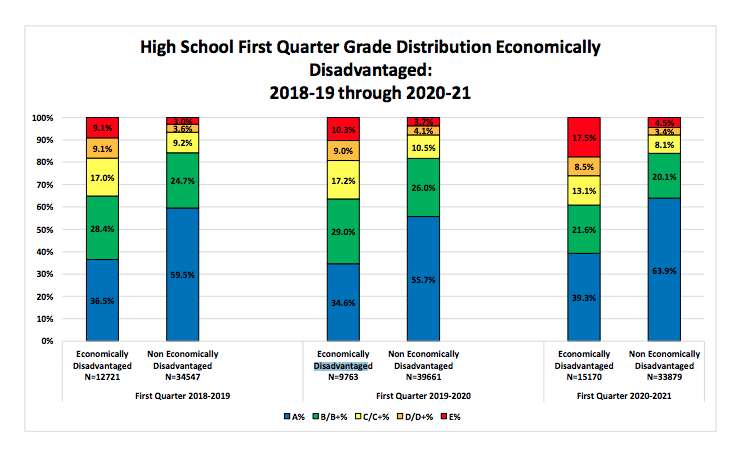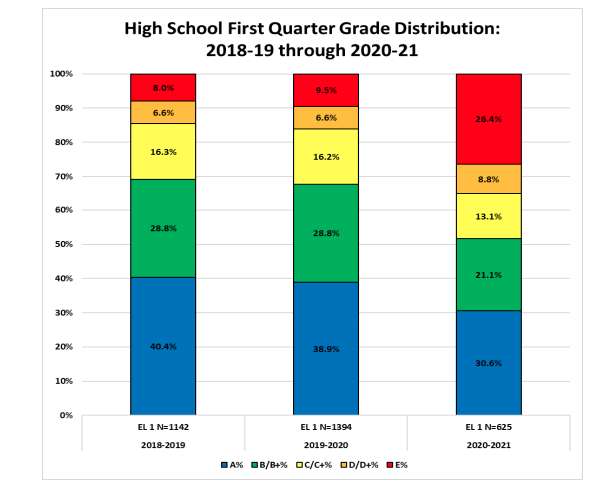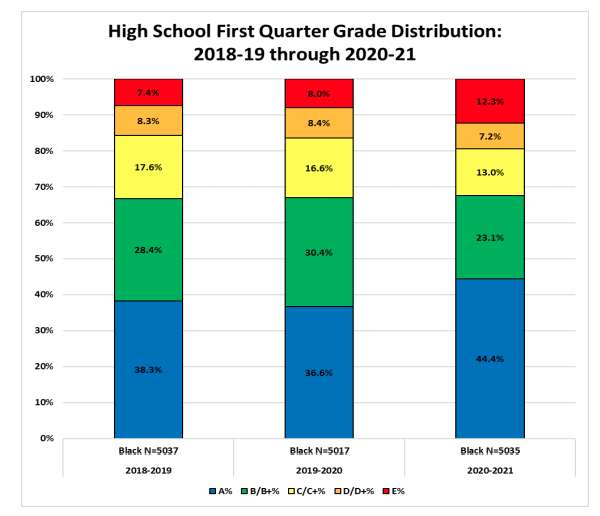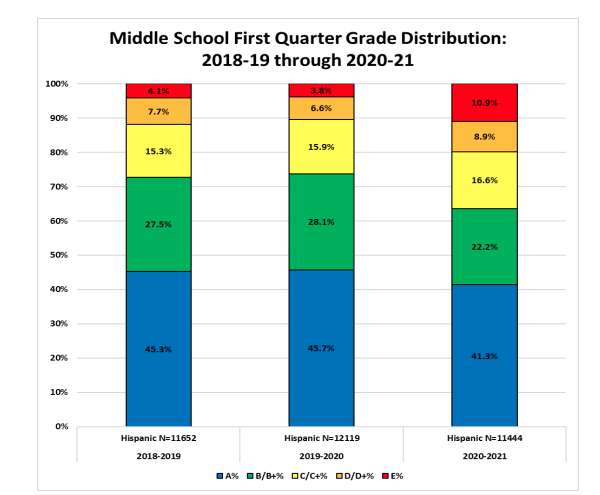(Updated at 4:55 p.m.) In addition to elementary students, more middle- and high-school students in Arlington Public Schools are struggling to make passing grades this year, according to a new APS report.
Black and Hispanic students, English-language learning students, and students with disabilities are experiencing the deepest drops.
“We knew that we might see some degradation in scores, and this is helpful to understand exactly where we are seeing some deep drops,” School Board Chair Monique O’Grady said during the School Board meeting on Thursday night.
The new report builds on data released earlier this month, and follows on requests from School Board members for more precise data the impact distance learning is having on different groups of students. Fairfax County Public Schools released a similar report last month.
Overall, Es — failing grades — account for 2.1% of all middle school grades this year, up from 0.7% last year. This year, 5.4% of high school grades are Es, up from 4.3% last year.
The full report separates data for middle and high school, but during the meeting, Superintendent Francisco Durán presented overall trends for specific student groups.
This year, the percentage of English-language learners and students with disabilities earning Es increased by 11 and 6.2 percentage points, respectively, he said.
Among racial and ethnic groups, the percentage of Hispanic and Black English-language learners in secondary grades earning Es increased by 15 and 7 percentage points, respectively, he said.
Economically-disadvantaged students were also hard-hit, according to the report. Last year, 10.3% of economically disadvantaged high schoolers received Es, compared with 17.5% this year. In middle school, the percentage grew from 4% last year to 11% this year.
Meanwhile, white children registered smaller increases in failing grades: 1.4% of middle-schoolers earned Es this year, compared to 0.6% last year, while 3% of high-schoolers earned Es this year, compared to 1.6% last year, according to the report.
In-person learning supports — such as “work space” programs, where kids can get out of the house and study quietly at school — are being rolled out at the Arlington Career Center, H-B Woodlawn, and at Wakefield, Washington-Liberty, Yorktown high schools. Other programs are scheduled to begin at middle schools after the winter break.
Outgoing School Board member Tannia Talento said more needs to be done to support students, even if larger groups of students start returning to classrooms early next year.
“I just want to remind the community that this isn’t just about reopening schools to support these needs and growing gaps,” she said during the meeting. “We are going to have to do this for groups who choose to stay home.”
Talento asked the school system to dig deeper and find out why grades are dropping — for instance, if students are generally dropping one letter grade due to instructional quality, or if generally good students are dropping dramatically in response to factors like a mental health crisis, or a death or job loss in the family.
In addition to disparities in letter grades, Black and Hispanic students are reading at lower proficiency levels, literacy test results show — an issue existed before distance learning. APS has started working on ways to address, through instruction and extra supports, the persistent literacy problems in the system, Durán said.
Images via Arlington Public Schools





